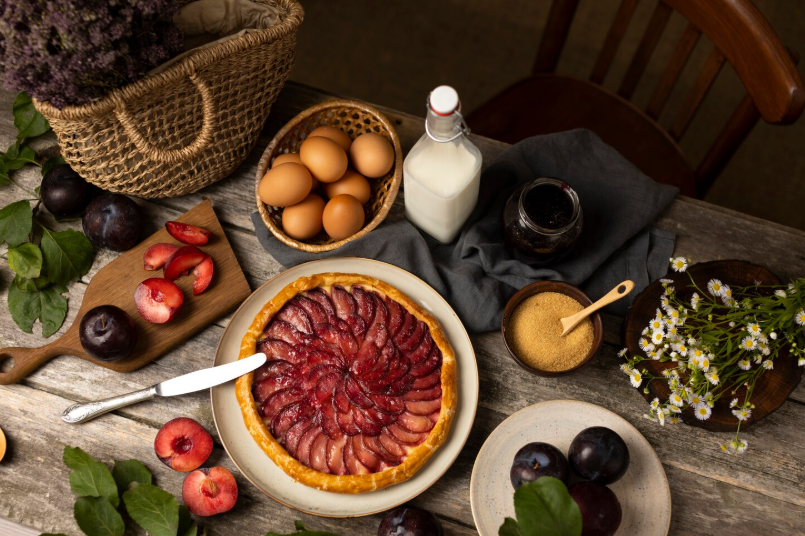Europe’s Most Exclusive Gourmet Villages for Food Lovers
Saint-Émilion, France — Wine country with refined dining
Set among the limestone slopes of Bordeaux’s right bank, Saint-Émilion is world-famous for its Merlot-rich wines, but it is equally prized for its refined culinary scene. Dining here ranges from cosy bistros serving hearty southwestern French fare to Michelin-recognised tables that pair regional classics with cellar-perfect wines. Walkable streets, historic cloisters and vineyard views make Saint-Émilion ideal for multi-sensory gastronomy: tastings at boutique châteaux followed by long lunches featuring local cheeses, truffles and slow-cooked meats. :contentReference[oaicite:0]{index=0}
Pienza, Italy — The home of Pecorino and Tuscan simplicity
In the heart of Val d’Orcia, Pienza is small in scale but mighty in flavour. The town is synonymous with Pecorino di Pienza, a sheep’s-milk cheese whose range of textures and ages make it a chef’s favourite for both rustic and refined preparations. Pienza’s tables favour seasonal, terroir-driven dishes: olive oil-boosted salads, rustic crostini, and understated pasta that allows local ingredients to shine. For travellers who appreciate ingredient-led cuisine and pastoral serenity, Pienza offers an authentic Tuscan palate. :contentReference[oaicite:1]{index=1}
Bra, Italy — Slow Food’s birthplace and a cheese lover’s pilgrimage
Bra in Piedmont is emblematic of Italy’s culinary stewardship. It is well known as the birthplace of the Slow Food movement and hosts one of the world’s major cheese events, drawing artisan producers from across Europe. The town’s food culture emphasises sustainability, biodiversity and craftsmanship — values that translate into memorable dining experiences, whether at intimate osterias or during seasonal festivals celebrating raw-milk cheeses, salumi, and Piedmontese classics. For directors who value provenance and quality, Bra is a meaningful stop. :contentReference[oaicite:2]{index=2}
Eguisheim, France — Alsace charm and cellar-to-table cuisine
Eguisheim is a picture-perfect Alsatian village where medieval lanes are lined with half-timbered houses and the local vineyards produce some of the region’s finest whites. The village’s dining scene leans into Alsace’s rich culinary heritage — think tarte flambée, choucroute garnie and refined game preparations — often accompanied by excellent local wines. Several small restaurants and family-run inns specialise in cellar-to-table experiences that elevate regional ingredients with classical technique. :contentReference[oaicite:3]{index=3}
Collioure, France — Mediterranean seafood and Catalan influence
Perched on the Vermilion Coast near the Spanish border, Collioure combines sunlit harbours, a storied art history and a vibrant seafood tradition. The village’s restaurants focus on the day’s catch — anchovies, monkfish, prawns and shellfish — prepared simply to highlight freshness. Collioure also benefits from local fortified wines like Banyuls, which pair exceptionally well with both seafood and the region’s more robust Catalan-inspired dishes. It’s a destination that delivers coastal sophistication without the pretension of big-name Riviera towns. :contentReference[oaicite:4]{index=4}
Óbidos, Portugal — Medieval streets and the art of Ginja
Óbidos is a compact, walled gem north of Lisbon that delights both the eye and the palate. Beyond its cobbled streets and castle, Óbidos is celebrated for ginjinha — a cherry liqueur traditionally served in edible chocolate cups — and for its intimate taverns and market stalls where regional specialties are sold and sampled. The town’s small-scale producers and artisanal food shops make Óbidos ideal for curated tasting itineraries, perfect for travellers who enjoy discovering a region’s signature flavour in a relaxed, historic setting. :contentReference[oaicite:5]{index=5}
Planning a Gourmet Village Tour — Practical considerations
When designing an itinerary for exclusive gourmet villages, attention to logistics makes the difference between a pleasant trip and an exceptional one. Aim for two to three days in each village to allow for winery or farm visits, one or two high-end dinners, and time with local producers. Book tastings and Michelin-starred tables well in advance, and consider private transfers to maximise time and comfort. For corporate or VIP travel, pairing culinary experiences with cultural activities — a private vineyard tour, a truffle hunt, or a chef’s table — elevates the trip into a strategic touchpoint for relationship-building.
Why these villages matter for a company director
For a company director, food-centric travel is more than leisure: it’s a strategic tool for hospitality, client entertainment and creative thinking. Intimate villages offer privacy, authenticity and memorable experiences that larger cities can struggle to provide. Sharing a slow, well-paired meal in a place where the produce and techniques have deep roots creates trust and shared stories — often the foundation of long-term partnerships.
Final tips for food-focused travel
Prioritise small, local producers and craft experiences over checklist tourism. Ask hoteliers and sommeliers for off-menu recommendations — the best dishes and producers are often not the ones on tourist maps. If timing allows, align your visit with a local festival or market day to experience regional specialties at their peak.
Stay Connected for More Travel and Lifestyle Inspiration. For more insights into travel, culture, and lifestyle tips, follow me on Instagram @salvadorordorica. If you’re seeking professional translation and localization services to enhance your global ventures, visit The Spanish Group — your trusted partner in bridging cultures worldwide.



